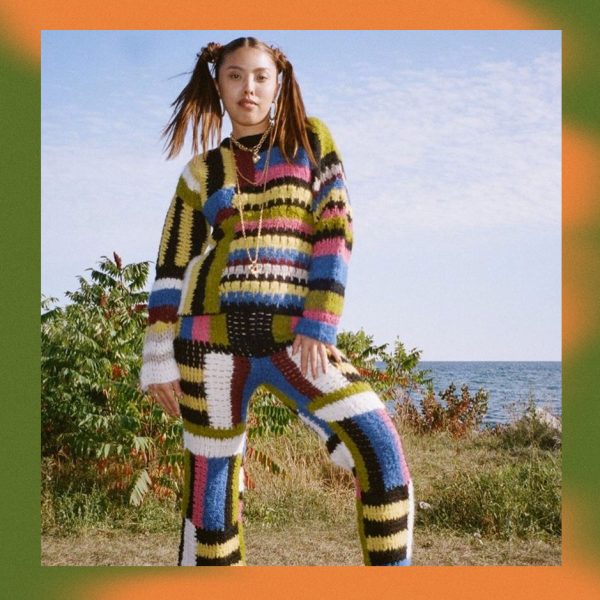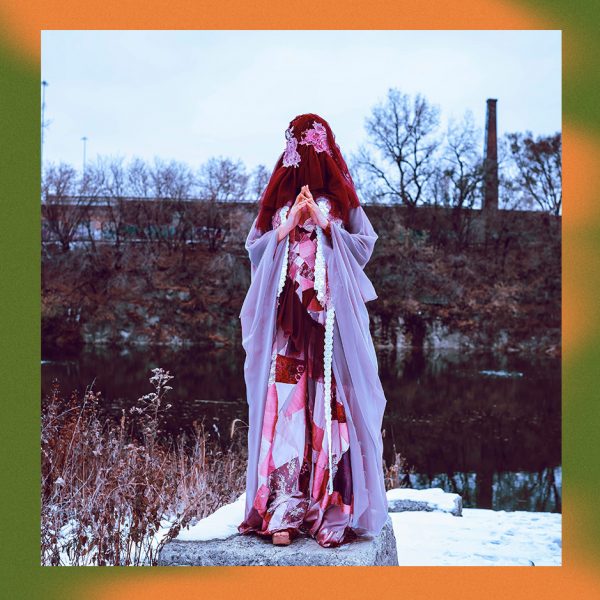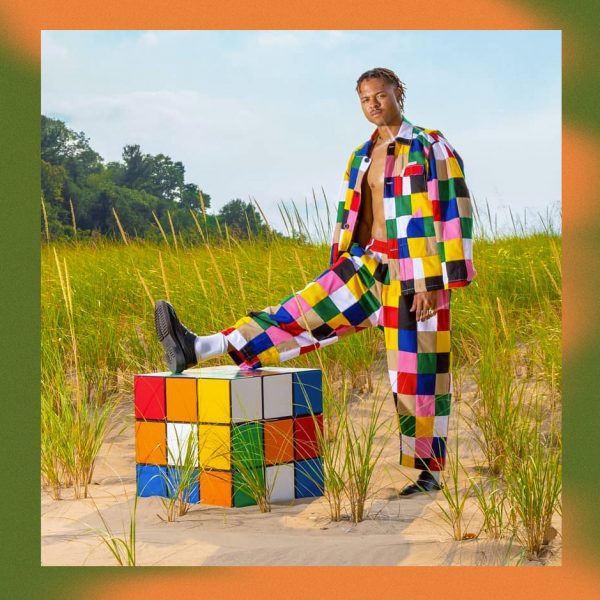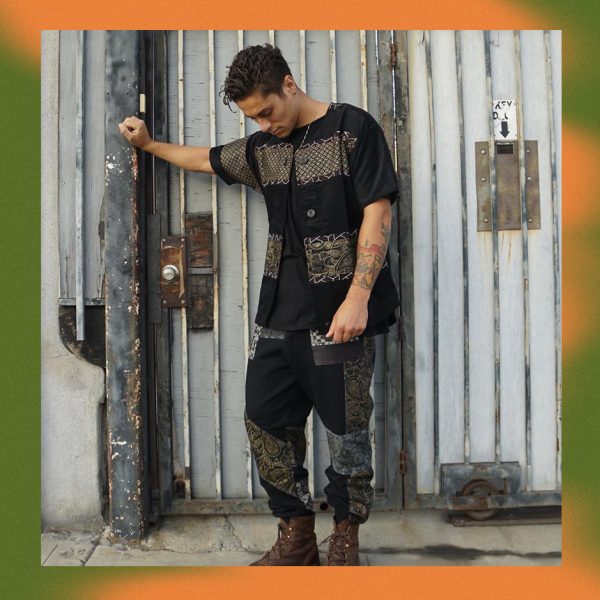Patchwork is one of Fall 2020’s unexpected “in” looks. While it may conjure thoughts of the elderly sewing scrap fabric together, this isn’t your grandmother’s quilt. Lately, various designers have adopted the technique to create funky, maximalist pieces.
The current popularization of this artisanal style is thought to have been sparked by the wave of “craft core,” which became a creative subculture for the many folks who are spending an inordinate amount of time at home and/or have escapist ideals for a return to the “simple life.”
Often a lengthy process of recycling, repurposing, and reducing waste, patchwork has been a conscious rebuke to fast-fashion and throw away culture as well as a proponent of sustainability. The homebody aesthetic not only invokes a sense of carefree comfort but also offers one of a kind pieces that converges the past and present. Here’s a look at some independent, streetwear and high-fashion industry designers who are hopping on this trend especially well:
Mozh Mozh

Mozhdeh Matin, the Peruvian-Iranian designer of Mozh Mozh, uses vibrant textiles to create a wide range of ancestral-inspired garments. The slow-fashion brand puts an emphasis on preserving Peruvian weaving and knitting techniques by working with Indigenous artisans.
“Patchwork has existed for thousands of years—from ancient Peruvian cultures to Japanese ancient cultures. We find that these weavers connect their patterns in so many creative ways which I find very inspiring for my work…” Matin tells Remezcla.
The conscious sustainability of her made-to-order separates go beyond maximizing the use of her materials by prioritizing native Peruvian fibers such as alpaca wool, Pima cotton and natural rubber. Matin’s Andean-inspired garments provide an eco-friendly gateway for customers to express themselves.
JJ Vintage

Designer Jasmine James creates retro outfits for an everyday streetwear style. With reworked Nike, Adidas and Champion logo pieces, the Oklahoma born, Brooklyn-based creator of JJ Vintage offers a throwback feel with a modern twist. Her popular, multi-color corset tanks, for example, fuse various cut-up materials from deadstock vintage and thrifted Nike shirts to create a newly stitched form-fitting top.
“Some of the tees are from the ‘90s or early 2000s,” James tells Vogue about the upcycled material she sources. Additionally, when discussing the popularization of the technique in her brand she said “it’s in between being comfortable and also being something that you might not see on anyone else.”
Andrea Montoya

“Ni Uná Mas”, the collection by Chicago-based Mexican-American designer Andrea Montoya was a response created to call out the pervasive crimes of femicide recurring in Ciudad Juarez, Mexico.
“Patchwork is a labor-intensive process and I associated this technique with the abusive labor that took place in maquiladoras, where large corporations took advantage of their female workers. Ultimately, making working women more vulnerable, unprotected, and a direct target for femicides.” Montoya tells Remezcla. Her conceptual patch-work garments reflect the delicate nature of this plea for awareness by combining lightweight materials such as lace, chiffon, and silk balanced with heavier weight textiles.
“Every piece of fabric was used. Even when building entire garments, I waste less than the palm of my hand. An accomplishment we should all be striving for, in and outside of the industry.” Montoya states.
Outsiders Division

Founded in 2012, Barcelona based designer David Méndez Alonso emotes nostalgia and imagination through his brand. His fashion line takes the idea of escapism through patchwork by rendering their clothing as a playful whimsical dreamland. The bold, multi-color pieces are reminiscent of the care-free attitude of one’s youth.
By utilizing small scale production to closely work with artisans who incorporate handmade techniques in their garments, they balance the old and the new. Their sense of duality is similarly expressed as a joyful and animated rebellion for mature folks who wish to invoke their inner child and are not afraid to take chances as an “Outsider.”
Lobo Creations

Ecuadorian-Australian designer Tomas Vallejo-Wolff uses variegated cloth fragments to decorate his streetwear designs. The LA-based brand consists of items created in a collage-like fashion with a boho sensibility that personifies the spirit of an open road traveler collecting souvenirs along their route.
“It begins with fragments of cloth or leather, gathered like colorful stories, on my work table,” he writes of his process. “Every piece of Lobo Creations is a carefully crafted, one-of-a-kind item—like your story. Like mine.”
Rua Carlotta

The brand’s Instagram bio speaks for itself: “Challenging Waste Culture.” Disrupting the predictability of a heavily curated vintage aesthetic, Charlotte Rose Kirkham, a self-taught mathematician turned designer, births a second life into her garments by using her degree to maximize the reuse of stray scrap knit fabrics.
Specifically, Kirkham uses a colorful myriad of knit materials as a base to stitch tessellated shapes together with a lettuce hem. On Kirkham’s website, the brand is described as “a creative exploration of what was already there… there is potential in everything. It deconstructs and reconstructs with quiet confidence, and with freedom of creativity at its forefront.”
Bode

Before patchwork was even trending designer Emily Adams Bode’s garments have been synonymous with the traditional craftsmanship of patchwork, quilting, and appliqué. The high-end menswear line based in New York City has proven that patchwork in clothing is more than just a temporal phenomenon. As a self-proclaimed collector, Bode gathers vintage textiles from 1900s mattress covers to ornate table linens, bath towels, and monogrammed bedsheets from the ’50s and ‘60s. Her signature style got her the CFDA Emerging Designer of the Year Award in 2019.
“It’s about discovering why we find intangible joy in old things,” Bode told GQ—clear in her collections that give off an antiquated but effortlessly modern look.







